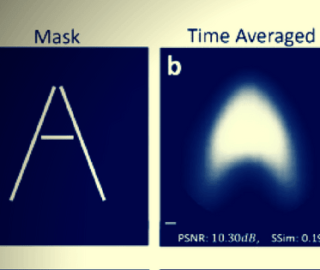
1 – You May Already Be Using Google’s AI Chips and Not Know It
At this week’s 2016 Wired Business Conference in New York City, Google announced that it’s already using its in-house artificial intelligence processing chips (and they may have been present in some products for the last year). Known as Tensor Processing Units (TPUs) after TensorFlow, the chips are being used in more than 100 projects, including Android’s voice recognition system and Google’s new cross-application search service Springboard. Cloud customers may also be tapping into the benefits of these AI-supported chips. According to Diane Greene, head of Google’s cloud business, the TPUs can handle machine learning tasks more quickly than graphics processors or other chips on the market. While Amazon is still the leader in the cloud computing market, Google’s custom chips could dent the market. Greene commented that over sales, Google’s focus in this department is on engineering and innovation.
(Read the full article on Wired)
2 – Full Steam Ahead: This Software Brain For Coal-Fired Power Plants Could Help Eliminate 500 Million Tons Of CO2
This past April, GE Power purchased Boston-based machine learning and data analytics company NeuCo Inc., along with its software and AI technology that helps increase the efficiency of coal-fired power plants (responsible for 40 percent of the world’s electric power). At the Minds + Machines Europe conference held on Tuesday, GE introduced the world’s first “Digital Power Plant for Steam” (DPP for Steam), which integrates NeuCo’s code and neural networks to help optimize machine output. The technology is also equipment neutral, with the ability to optimize machines regardless of manufacturer. The DPP for Steam is equipped with 10,000+ sensors that increase efficiency by as much as 2 percent. According to GE, the technology could help pull 500 million metric tons of greenhouse gas emissions (equivalent to removing every tenth car from the road) from the atmosphere, if it were used in every coal-fired plant on Earth.
(Read the full article on GE Reports)
3 – LogicMonitor Raises $130 million to Grow its Data Center Monitoring Platform
SaaS startup LogicMonitor just raised $130 million from private equity firm Providence Strategic Growth (PSG), a sizable jump from its initial funding rounds of $13 million. LogicMonitor, which was founded in Santa Barbara in 2008, specializes in data center monitoring services, both in the cloud and on-location. The software-as-a-service platform can monitor periods of downtime or errors in performance in a range of systems, from networking equipment and services to cloud services provided by companies like Amazon and Microsoft. Its services are already being used by companies that include Trulia, Zendesk, and JetBlue. Kevin McGibber, CEO of LogicMonitor, described the company this way:
“LogicMonitor is to performance monitoring what Salesforce is to customer relationship management and ServiceNow is to IT workflow management.”
The company will continue to put focus on the cloud-based technology, which (according to IDC Research) grew as a market upwards of 20 percent in 2015 to $29 billion.
(Read the full article on VentureBeat)
4 – HP Enterprise Shows Off a Computer Designed to Emulate the Human Brain
Research scientists at Hewlett Packard Enterprise (HPE) are developing a new generation of computer or ‘neuromorphic’ chips designed to function in parallel form, similar to neurons in the brain, in order to make quicker decisions based on probabilities and associations. These chips may be years in development before they’re released to the public, but HPE has already built a prototype computer system through which its testing its brain-based circuitry. The system uses ‘memresistors,’ which are a new kind of storage and memory device. Unlike SSDs and DRAM, which simply store data, memresistor circuits use data and current flow characteristics to trigger learning and retention, again similar way to the synaptic connections in brains. These new chips aren’t meant to replace GPUs or CPUs because they’re based on probabilities; instead, they may act as a co-processor that bring added intelligence to certain computer operations like speech recognition.
(Read the full article on PC World)
5 – Microsoft Acquires LinkedIn for $26.2 Billion
On Monday, Microsoft announced the largest acquisition in its history – a $26.2 billion purchase price for LinkedIn. CEO Satya Nadella described the acquisition as an important move in helping revamp Microsoft’s outdated tech image, though both companies have different complementary strengths to offer. As Nadella stated,
“It’s really the coming together of the professional cloud and the professional network.”
Connecting Office and other Microsoft software to LinkedIn could provide professionals with valuable insight into potential customer and networking information, for example. Nadella also mentioned providing Cortana, Microsoft’s digital assistant, access to data from the LinkedIn network. On LinkedIn’s side, the high-profile deal may help stall the decelerating growth that the company has witnessed over the last year (share prices went from $269 in February 2015 to $101.11 this past February). LinkedIn CEO Jeff Weiner will keep his current position when the deal closes by end of 2016.
(Read the full article on the Wall Street Journal and the full transcript of CEO Jeff Weiner’s speech to employees on the U.S. Securities and Exchange Commission)
Image credit: GE Power







